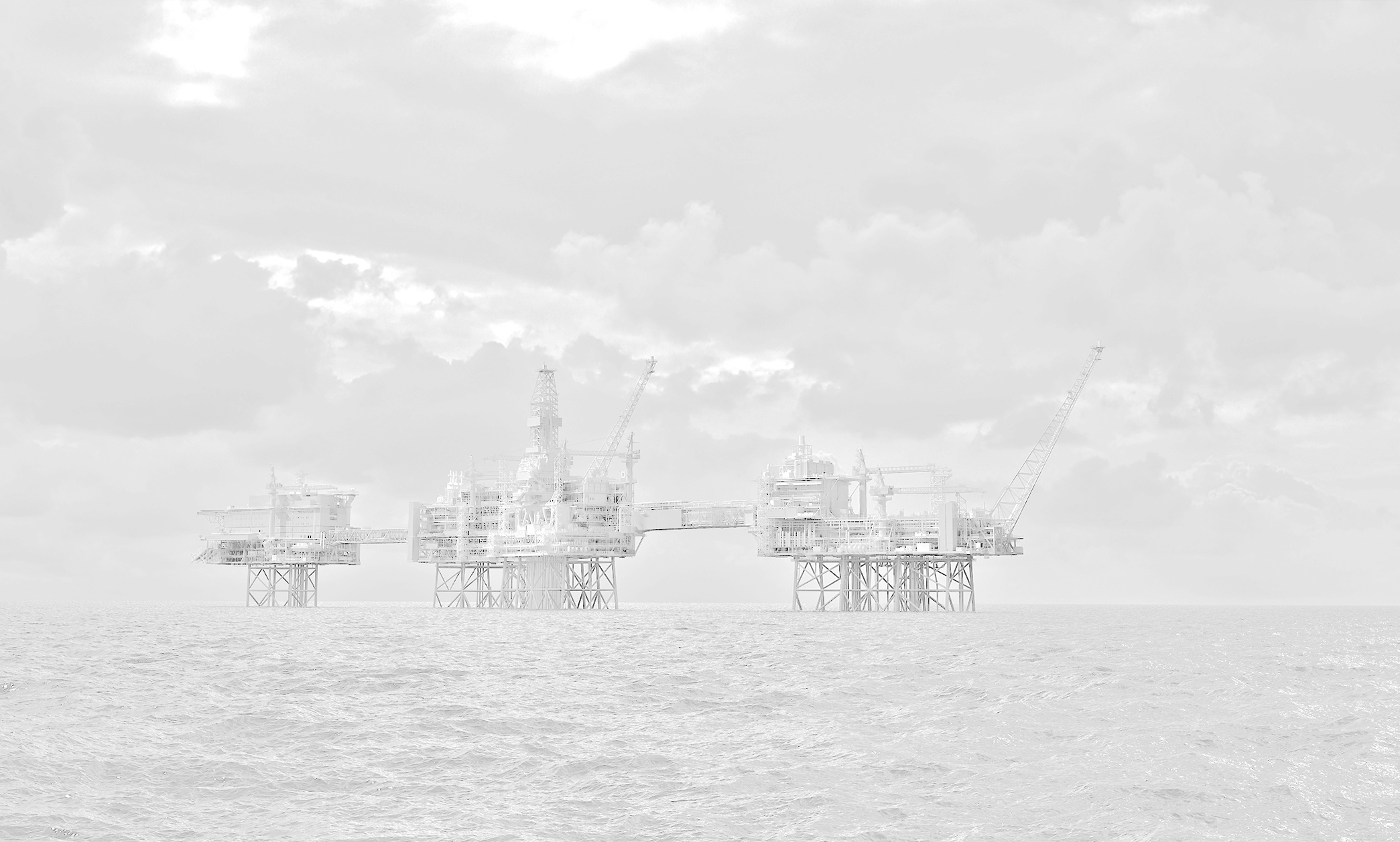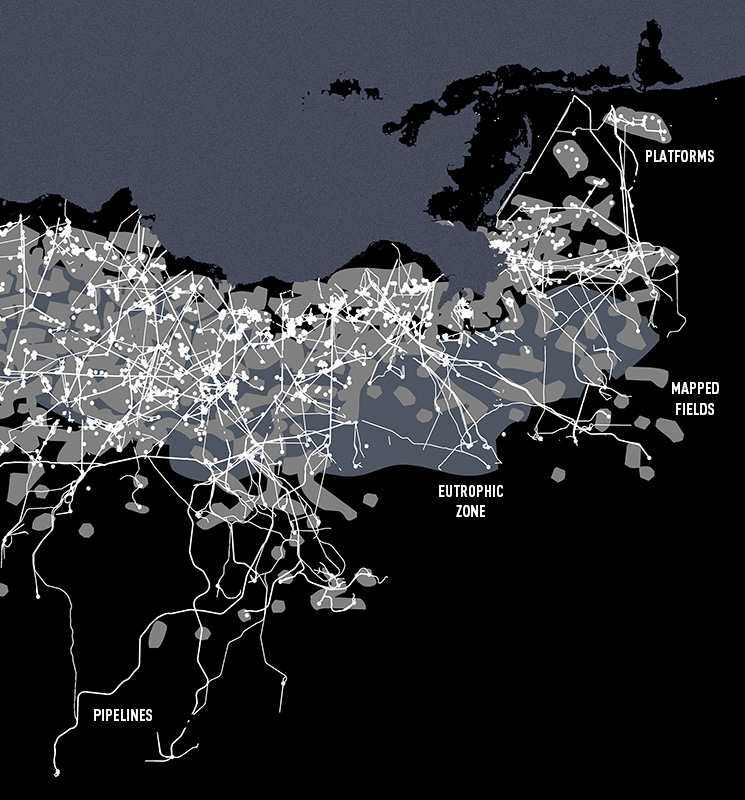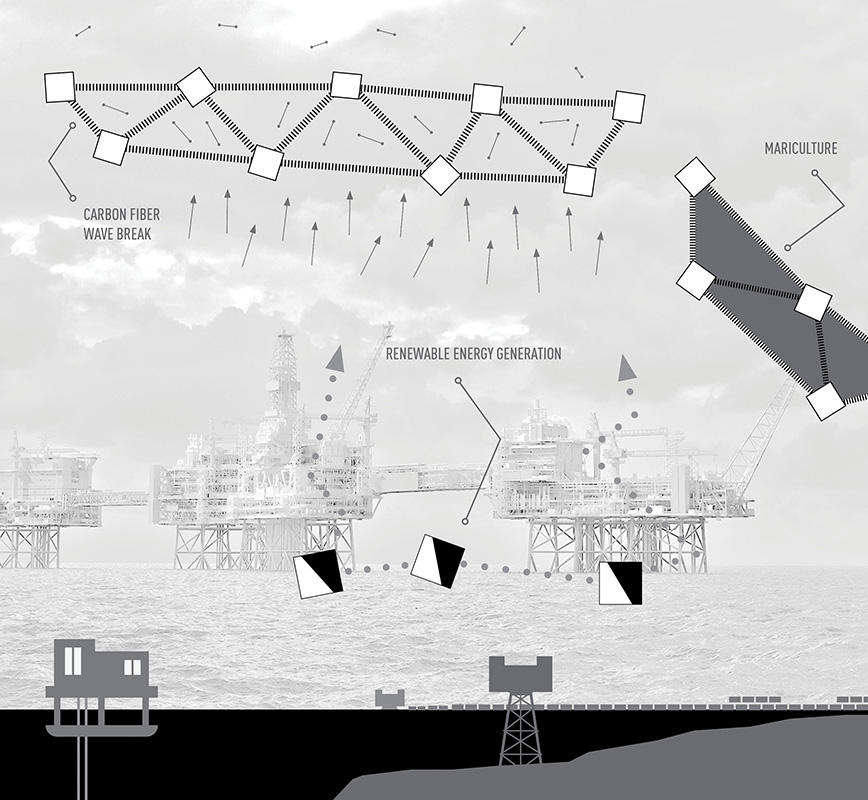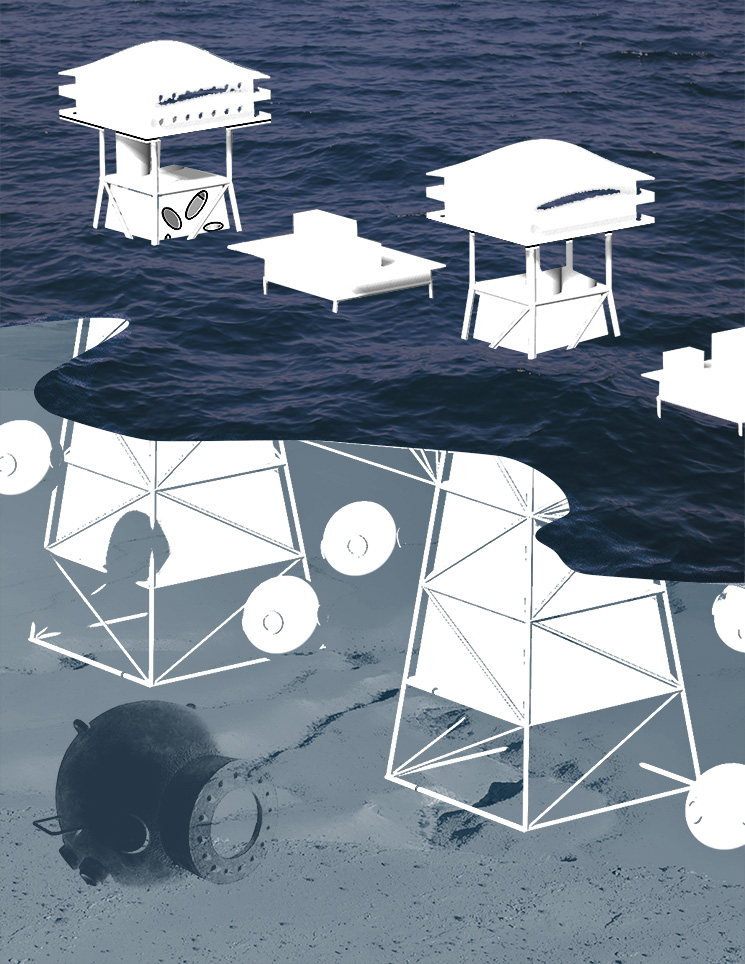
Pamphlet Architecture 36
Excerpt from submission to the Pamphlet Architecture 36 competition, 2016. Collaboration with Jared Winchester and Farrokh Rostami Kia. Awarded Honorable Mention.
Early in discussions about this pamphlet, our team affirmed that we would not use the trope of a post-apocalyptic scenario, instead envisioning climate change as a generator of positive societal evolution. We imagined that inevitable near future when, by design or by disaster, our culture becomes ‘post-oil,’ and considered the myriad ways in which our built environment and our accepted social norms will be affected.
My principle role in the project was a chapter called ‘Post-Oil Ecologies.’ This addressed the vast, existing infrastructure in the Gulf of Mexico, i.e. the thousands of active and decommissioned oil rigs of different types that are clustered off the coastline. I considered ways in which this extensive built environment could accompany and facilitate an evolved culture.

A New Territory
Oil and gas exploration in Texas and Louisiana, on- and offshore, has created a new cartography. Underground deposits are marked by the wells and rigs at the surface and a mapping of this terrain emerges. How can the existing infrastructure of thousands of oil platforms be reconceived as an armature upon which to form a new model of habitation?

Semi-submersible rigs can be repositioned and repurposed to generate renewable electricity through Ocean Thermal Energy Conversion, using the temperature differential of deep and shallow waters with a liquid heat exchanger to produce baseload electrical energy, transmitted to shore via underground armored cables. Additional energy generation possibilities exist with wave motion, wind turbines, and photovoltaic solar panels.
Maricultural fields are created in the spaces between fixed rigs, with halophytic crops produced for biomass and food-grade oil.
As the technology for building stable and expandable floating infrastructure is developed, the platforms will be used as the initial anchors or nodes to which the new habitable ‘land’ is attached. The high load-capacity of these means that they can become the foundations for larger structures, including public assembly, schools, hospitals, and other services.

Life on the water soon leads to life in the water. The subterranean becomes the ‘subaquean’ and we begin to inhabit the scaffolding below the surface, a space of muted sounds, dimmed light, and climatic stability. As the sea rises to engulf our homes, we descend into its embrace, a belated acceptance of our place in nature.